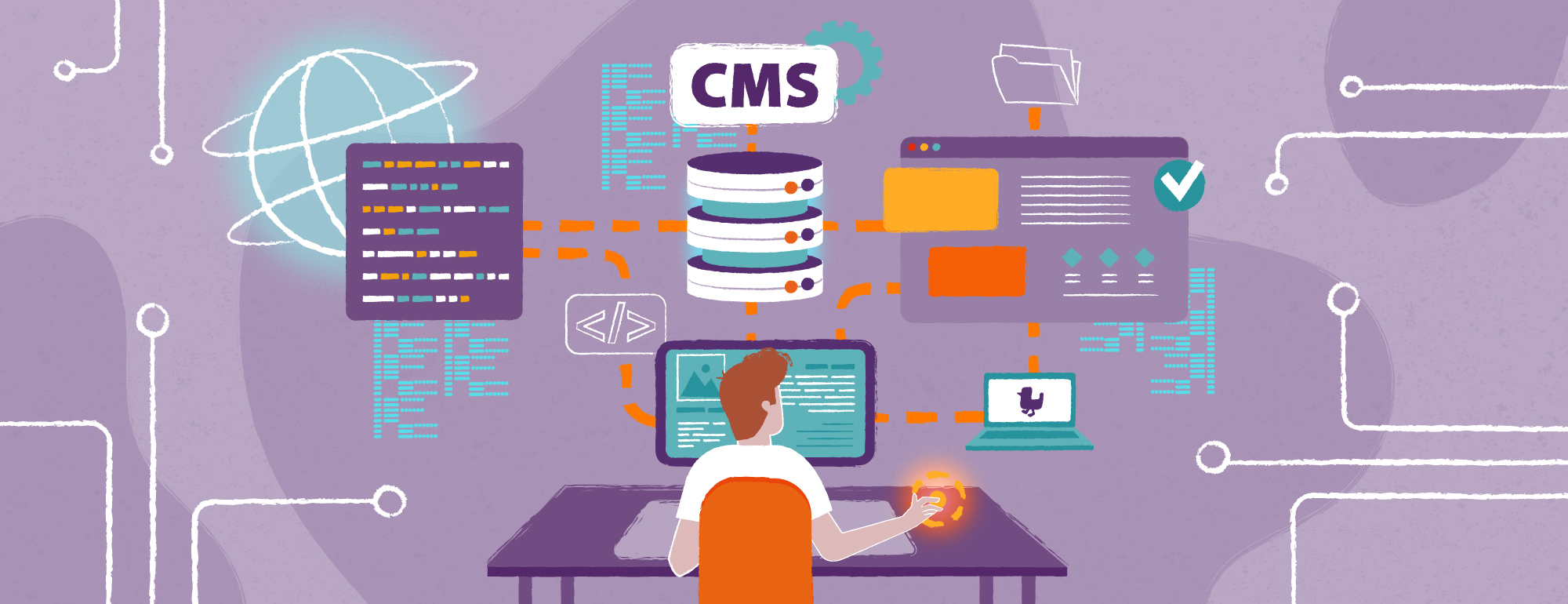B2B Platform Implementation / Where to Start
In a world where the pace of change accelerates with each year, digitization of B2B sales is no longer a choice – it’s a necessity. Companies that want not only to stay afloat but also to spread their wings are increasingly reaching for modern B2B platforms. These platforms allow for streamlining processes, automating key operations, and enhancing collaboration with business partners.
But how exactly should one approach implementing such a platform? How to prepare so that you not only “launch the system” but actually use it and derive real benefits? In this article, we will guide you step by step through this process – from choosing the right solution to implementation and development.
What is a B2B Platform?
A B2B (Business-to-Business) platform is an advanced digital sales environment directed at other companies. It works like an online store but for wholesale customers – with a whole package of functionalities tailored to more complex business relationships.
It’s a space where your partners can:
- browse products along with documentation and specifications,
- place orders in a quick and repeatable manner,
- receive individual offers and discounts,
- track order statuses,
- manage roles and permissions within their purchasing teams,
- benefit from convenient integrations with their ERP or CRM systems.
Benefits of Implementing a B2B Platform
The benefits of implementing a B2B platform are measurable and noticeable almost immediately. The most important ones include:
- Increase in conversion rate – customers place orders faster and more easily.
- Reduction of operational costs – automation reduces the need to engage the sales team in every stage of the order.
- Greater transparency and control – real-time data, possibility to analyze KPIs, and better planning.
- Greater satisfaction of business partners – customers like independence and speed of service.
Types of B2B Platforms
Depending on the scale of business, needs, and budget, you can choose one of three B2B platform models.
SaaS (Software as a Service) Platforms
SaaS platforms are cloud solutions offered as a service with a subscription model.
Advantages:
- Quick implementation without investment in infrastructure
- Regular updates and ongoing access to new features
- Lower initial cost
- Scaling as the business grows
Challenges:
- Limited possibilities to adapt to specific processes
- Dependence on an external provider
- Potential integration limitations
One example of such a platform is ONe – a comprehensive B2B commercial solution developed by practitioners for wholesalers, distributors, and manufacturers.
The ONe B2B e-commerce platform stands out with:
- High scalability and performance
- Ease and speed of implementation
- Intuitive interface
- Intelligent product search
- Ability to handle multiple shopping carts and shopping lists
- Easy access to transaction data both online and offline
- Ability to negotiate prices and submit quote requests
- Creation of personalized price lists
- Support for promotions and discount codes
- Easy management of roles and permissions
- Access to invoices and balances of individual customers
- Ready-made connectors to popular business systems such as: ERP systems, PIM systems, Google tools, payment gateways, marketing automation systems, or popular marketplace portals
- Advanced sales representative panel, which allows easy creation of dedicated offers for customers and management of their orders
- ePrice module, which enables comprehensive pricing management, and as a result, increases margins and profits
Open Source Platforms
Solutions with open code give a lot of freedom for modifications.
Advantages:
- Flexibility in modifying functionality
- No license fees
- Independence from a single provider
- Wide range of integration possibilities
Challenges:
- Need to have a development team
- Potentially higher maintenance and development costs
- Responsibility for security and updates
An example of an Open Source platform is Magento 2, which works well in B2C and B2B models. In the case of B2B sales, it offers a range of functionalities supporting business needs:
- Personalized catalogs and price lists for different customer groups
- Possibility of quick ordering using SKU or importing from CSV files
- Orders based on purchase history
- Support for multiple user accounts within a single business customer
- Automation of purchasing processes and order approval workflow
- Advanced integration capabilities with ERP, PIM, CRM systems, and other business tools
The Magento platform does not use vendor-lock, thanks to which its users can migrate data without any obstacles and freely choose a technology partner – the implementation contractor.
Dedicated Platforms
Dedicated platforms, such as Univio Commerce solutions offered by Univio, are custom-designed and perfectly tailored to the needs of a specific company.
The Univio Commerce solution with functionalities dedicated to the B2B sector includes:
- Management of user hierarchy and permissions
- Advanced creation of product and contractor segments
- Access to settlement documents from any source
- Advanced personalized price lists
- Intuitive product search and filtering
- Advanced CMS functions with support for multilingualism and multi-channel
- Extensive catalog promotions, cart promotions, as well as advanced mechanisms of promotional conditions, or discount code campaigns
- Product configurators
- Handling of merchant limits
- Quick order and reorder modules
- Extensive analytical and reporting tools

How to Plan an Effective Implementation?
Implementing a B2B platform is a process that requires preparation and a good strategy. Here are the key stages.
1. Needs Analysis
Before you do anything, answer a few questions for yourself (and your team):
- What problems do we want to solve?
- Which processes do we want to automate?
- What functionalities are key?
- What KPIs do we want to improve?
2. Integration Strategy
The platform must work with your systems:
- Indicate which systems require integration (ERP, CRM, PIM, WMS),
- Define what data will be transmitted between systems (inventory levels, prices, product descriptions, transaction data, etc.) and the frequency of their synchronization,
- Plan data migration and database organization.
3. Choosing a Provider
Look for a partner who:
- has experience in your industry,
- understands your processes,
- offers flexible, scalable, and secure solutions,
- provides support throughout the implementation process and after its completion.
Training and Organization Preparation
Even the best platform won’t work if the team doesn’t know how to use it. Prepare training for:
- Administrators – configuration, integrations, system management.
- Sales team – order handling, customer relations.
- Business partners – logging in, searching, ordering.
Also, take care of communication. Talk about what is changing and why. Engage opinion leaders, create a program of change ambassadors, and most importantly, implement changes in stages.
Testing and Optimization
Don’t launch the platform without tests! Organize:
- Internal tests (modules, UX, performance),
- Tests with selected customers (scenarios, feedback, training),
- Collecting opinions and adjusting the system before full launch.
Monitoring and Development
After launch comes the time for analysis and optimization. Measure:
- Sales effectiveness (conversions, cart value, online share),
- Operational efficiency (errors, order time, service costs),
- Customer satisfaction (retention, NPS, purchase frequency).
Regularly update functionalities, adjust UX, respond to partner needs, and keep the system in good condition.
Examples of Successful Implementations
Univio is an expert in digital transformation of B2B enterprises. Check out our successful B2B platform implementations to date.
Modern B2B Platform Tailored to Business Needs
Atlas, a leader in the production of construction chemicals in Poland, in cooperation with Univio, implemented a modern B2B platform based on the Univio Commerce system. The new solution enabled customers to shop conveniently online, reflecting specific purchasing processes and integrating with Atlas’s internal systems. The platform offers, among other things, a hierarchical customer structure, an advanced cart process, and investment handling functionality. Thanks to the implementation, the number of users increased by 80%, and 70% of B2B orders are processed online.

Unique Price Management System in B2B Platform
For the Grudnik trading group, a leader in the installation-heating and sanitary industry, we implemented a modern B2B platform based on the Univio Commerce system. The new solution enabled customers to shop conveniently online, reflecting specific purchasing processes and integrating with Grudnik’s internal systems. The platform offers, among other things, a hierarchical customer structure, an advanced cart process, and investment handling functionality. Thanks to the implementation, the number of customers increased by 10%, and the B2B platform complements distribution through stationary branches, being the next stage in the implementation of the omnichannel commerce strategy.
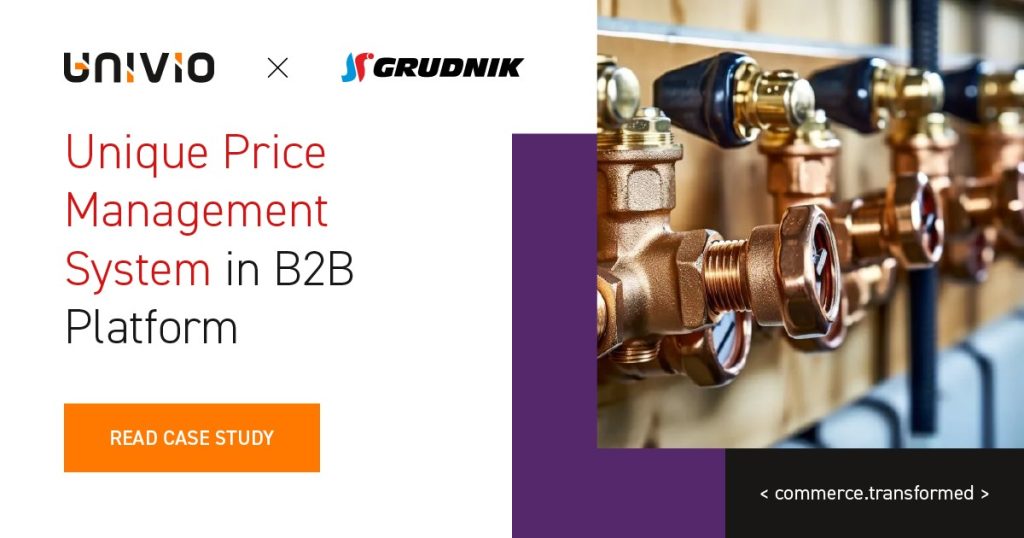
Online B2B Transaction Channel
For Bakalland, we created a modern online sales channel for business customers (B2B). Thanks to the implementation of a platform based on Magento 2, different customer groups — e.g., wholesalers, stores, or retail chains – can shop on their individual terms.
Each customer has access to personalized price lists, dedicated offers, and can conveniently order products online. This approach has significantly streamlined the purchasing process and increased the comfort of cooperation.
This is a good example of how flexible e-commerce tools can really support sales in the B2B model.
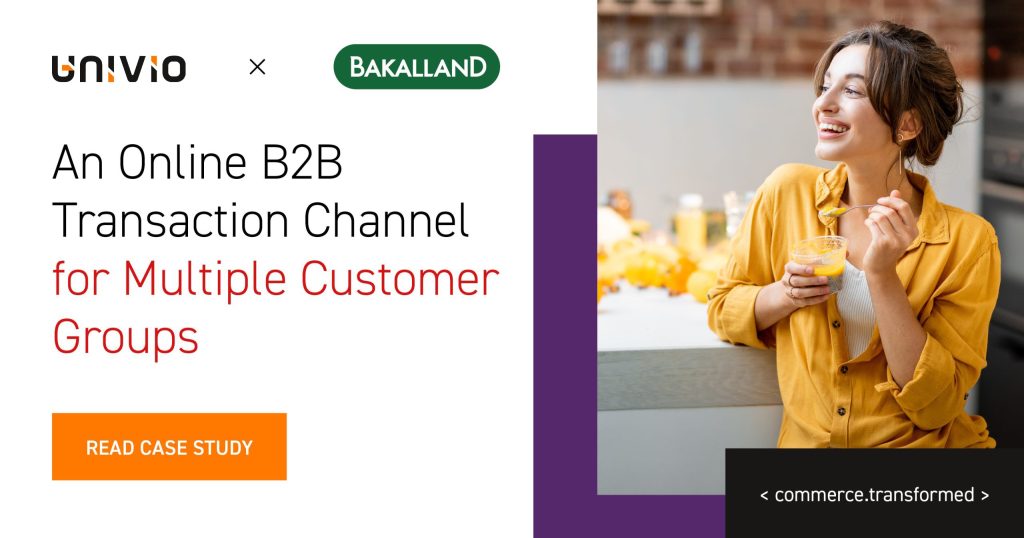
Fully Integrated Sales and Distribution in B2B channels
Fabryki Mebli “FORTE” SA, one of the leading furniture manufacturers in Europe, decided on digital sales transformation, responding to the growing needs of B2B contractors. The previous closed purchasing panel ceased to meet expectations, which led the company to cooperate with Univio on implementing a modern e-commerce platform.
As part of the project, an advanced B2B platform based on the Univio Commerce system was created, integrated with the PIM system, enabling effective management of product information. The new solution offers contractors an intuitive customer account with access to order history, invoices, fulfillment statuses, and the ability to submit complaints. Additionally, the platform allows creating wish lists and comparing products, as well as handling different types of orders, including those for display or warehouse, with the option of splitting deliveries.
Thanks to scalable architecture, the new tool not only automated sales processes but also prepared the company for future development and integration with other systems, minimizing the need for manual data updates and reducing the risk of errors.
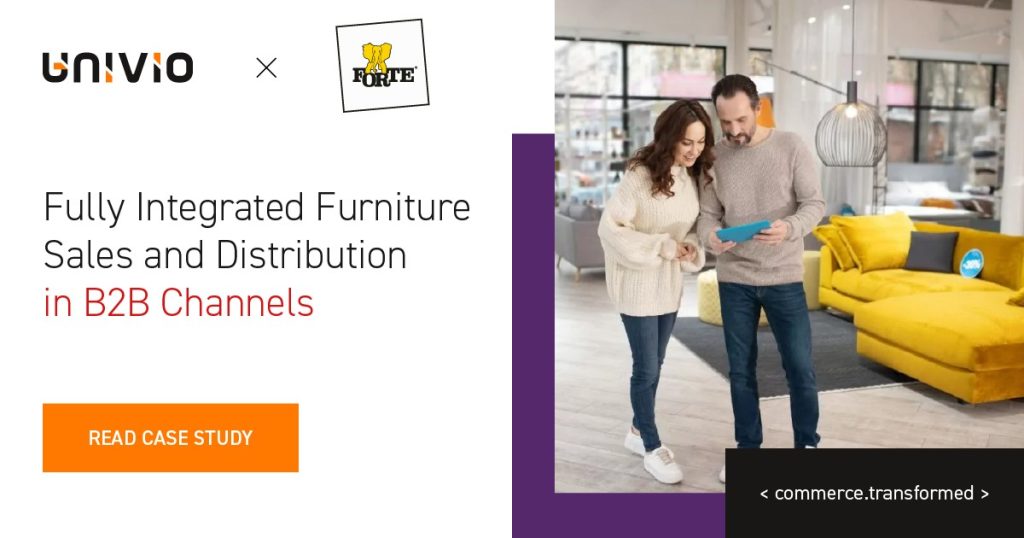
Modern B2B Platform as an Investment in the Future
Euroterm, one of the leading distributors of heating and installation systems in Poland, decided to implement the ONe B2B platform. The goal was to create a modern online sales channel that would meet the growing demands of business customers and enable further development of the company.
Thanks to the new platform, Euroterm achieved impressive results:
- 150% increase in online sales revenue
- 135% increase in the number of online transactions
- 200% higher online cart value compared to offline
The implementation of the ONe B2B platform allowed for the automation of purchasing processes, better management of the product offer, and adaptation to the individual needs of different customer groups. It’s a long-term investment that has significantly increased Euroterm’s operational efficiency and competitiveness in the market.
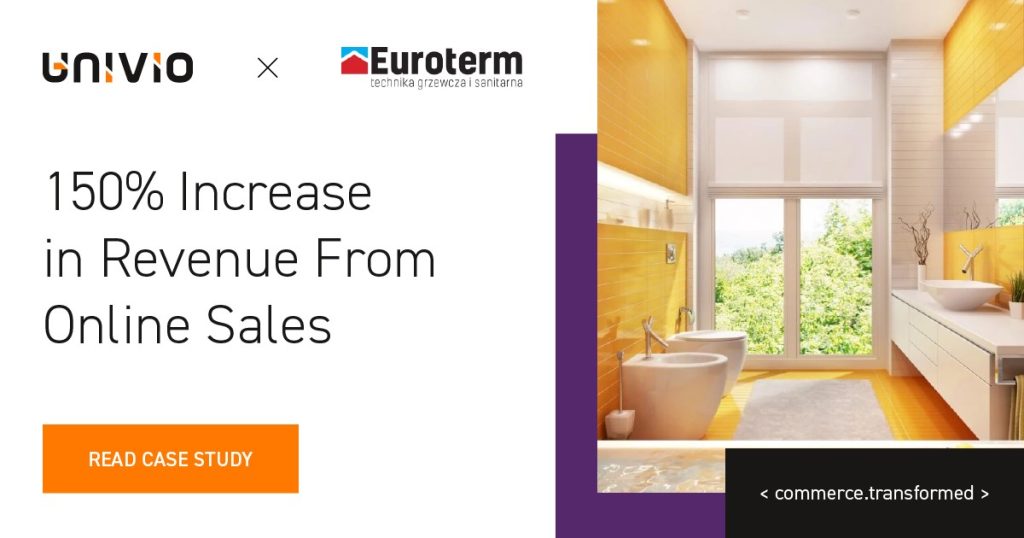
Comprehensive Approach Is the Key to Success
Implementing a B2B platform is not just an IT project – it’s a change in the way your company sells, serves customers, and collaborates with partners. The key to success is a comprehensive approach that combines technology, processes, and people.
A well-designed and implemented B2B platform can become a strong foundation for the digital transformation of your organization. And if you choose a solution tailored to your business realities – such as the ONe B2B platform or Univio Commerce – you gain not just a tool, but an entire ecosystem of possibilities.
Remember: digitization is not an end in itself. It’s a means to build an efficient, flexible, and future-ready business.






